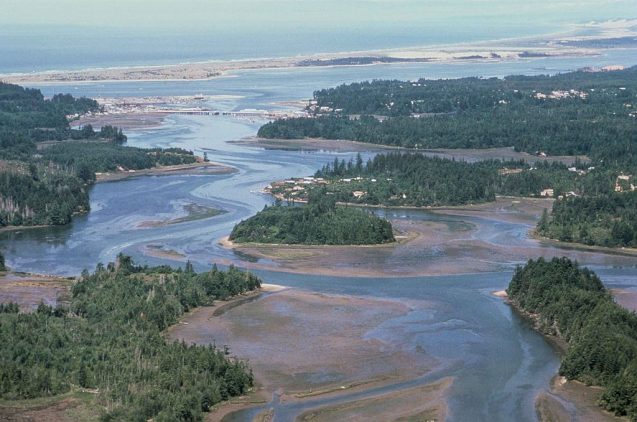
A new study finds that the loss of a hectare of wetlands — an area of land roughly the size of two football fields — costs society an average of $1,900 in flood damages per year. In developed areas, that figure jumps to more than $8,000. The study is coauthored by scholars at Columbia University and Resources for the Future, and is slated to appear in the journal American Economic Review.
The paper offers new evidence on the benefits of wetlands just as the Supreme Court takes up a case that could limit the federal government’s jurisdiction over wetland protection under the Clean Water Act. The Environmental Protection Agency under the Biden administration is also in the process of redefining and updating federal waterway regulations.
The study’s findings are at odds with a Trump administration interpretation of the Clean Water Act, called the 2020 Navigable Waters Protection Rule, which removed protections for wetlands not directly connected to streams or rivers. The administration cited a lack of credible estimates of the value of wetlands as justification for its stripped-down rule.
In addressing this data gap, the new study reveals that, in fact, the most valuable wetlands for flood mitigation are those slightly removed from the nearest stream or river.
“Our findings present a new perspective—and hopefully can serve as a valuable asset as the regulations evolve,” said coauthor Charles Taylor, a PhD candidate in Sustainable Development at Columbia’s Earth Institute and the School of International and Public Affairs.
“Wetlands provide important benefits to communities by soaking up excess water that might otherwise cause heavy flooding,” said Resources for the Future Fellow and paper coauthor Hannah Druckenmiller. “The issue is that these benefits are rarely quantified. So, when policymakers are deciding what policies to institute, any benefit-cost analysis will likely be skewed to favor the costs. In this paper, we seek to highlight wetland benefits to help balance the scales.”
The researchers quantified how wetland loss is related to increases in flood damages by examining payouts from the National Flood Insurance Program (NFIP). Most Americans with flood insurance use the NFIP, so claims made under this program likely comprise a significant component of residential flood costs. The authors find that wetland loss significantly increases flood insurance claims made under the NFIP; on average, one hectare of wetland loss between 2001 and 2016 increased flood claims by $1,900 per year. In developed areas, that average rose to more than $8,000 per hectare.
Wetland loss between 2001 and 2016 cost the United States an estimated $600 million or more per year in damages from flooding, said the researchers. They also estimate that wetland conservation pays for itself through flood reduction within 6 to 22 years.
Not all flood damages are captured by the National Flood Insurance Program, so the paper likely underestimates the value of wetlands for flood damage mitigation. The findings also do not consider benefits from recreation, habitat creation, water filtration, or the fishing industry.
Adapted from a release by Resources for the Future



